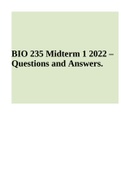Samenvatting
Summary Resume - Organizing for Innovation (EBM064A05)
Summary of Articles & Lectures, , 26 pages W1: Introduction − Crossan, M.M. & Apaydin, M. 2010. A multi-dimensional framework of organizational innovation: A systematic review of the literature. Journal of Management Studies, 47: . W2: Topic “Organizing Knowledge and Capabilities for Inn...
[Meer zien]













